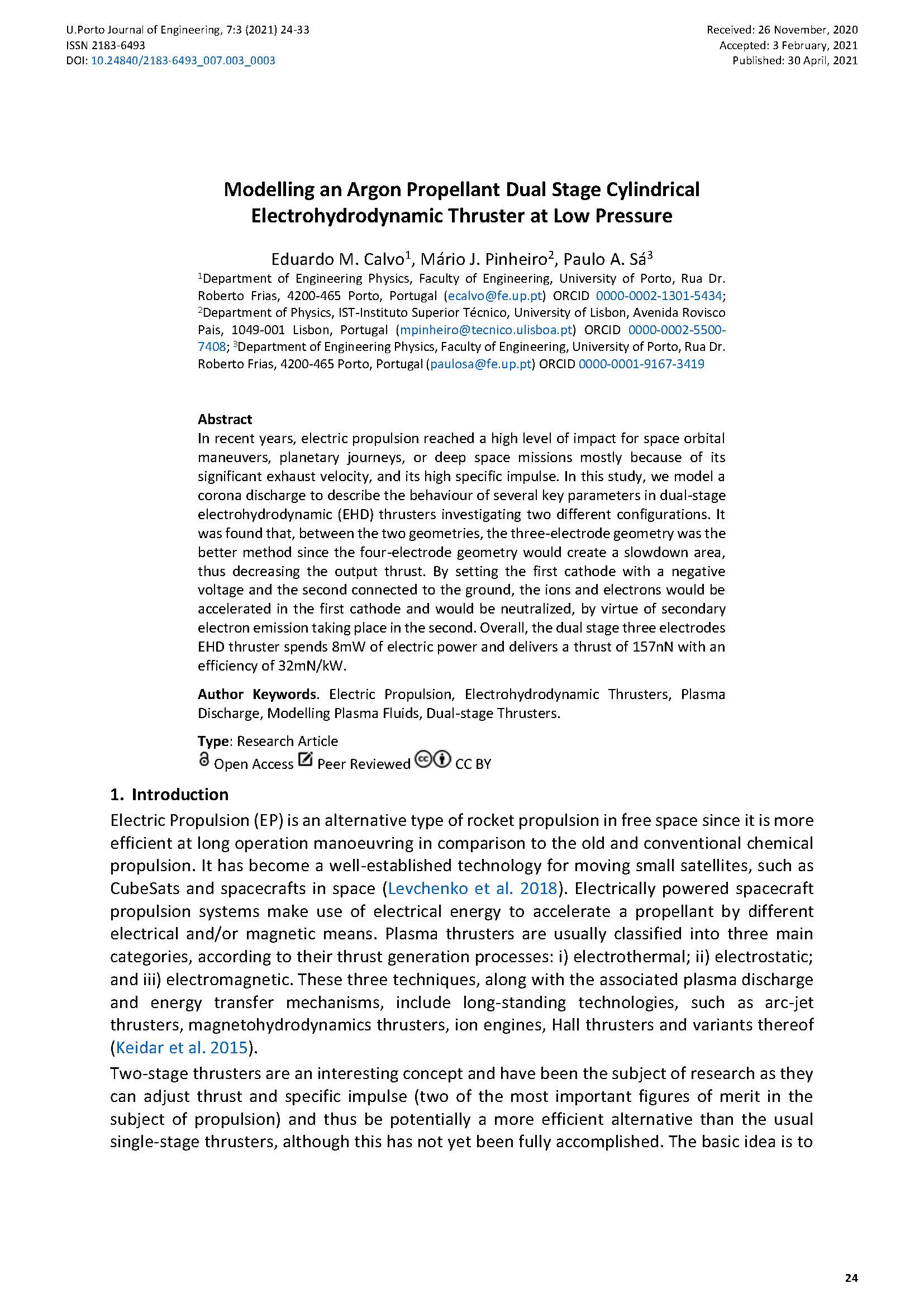Modelling an Argon Propellant Dual Stage Cylindrical Electrohydrodynamic Thruster at Low Pressure
Main Article Content
Abstract
In recent years, electric propulsion reached a high level of impact for space orbital maneuvers, planetary journeys, or deep space missions mostly because of its significant exhaust velocity, and its high specific impulse. In this study, we model a corona discharge to describe the behaviour of several key parameters in dual-stage electrohydrodynamic (EHD) thrusters investigating two different configurations. It was found that, between the two geometries, the three-electrode geometry was the better method since the four-electrode geometry would create a slowdown area, thus decreasing the output thrust. By setting the first cathode with a negative voltage and the second connected to the ground, the ions and electrons would be accelerated in the first cathode and would be neutralized, by virtue of secondary electron emission taking place in the second. Overall, the dual stage three electrodes EHD thruster spends 8mW of electric power and delivers a thrust of 157nN with an efficiency of 32mN/kW.
Downloads
Article Details

This work is licensed under a Creative Commons Attribution 4.0 International License.
Authors who publish with this journal agree to the following terms:
- Authors retain copyright and grant the journal right of first publication with the work simultaneously licensed under a Creative Commons Attribution License that allows others to share the work with an acknowledgement of the work's authorship and initial publication in this journal.
- Authors grant the journal the rights to provide the article in all forms and media so the article can be used on the latest technology even after publication and ensure its long-term preservation.
- Authors are able to enter into separate, additional contractual arrangements for the non-exclusive distribution of the journal's published version of the work (e.g., post it to an institutional repository or publish it in a book), with an acknowledgement of its initial publication in this journal.
- Authors are permitted and encouraged to post their work online (e.g., in institutional repositories or on their website) prior to and during the submission process, as it can lead to productive exchanges, as well as earlier and greater citation of published work (See The Effect of Open Access).

